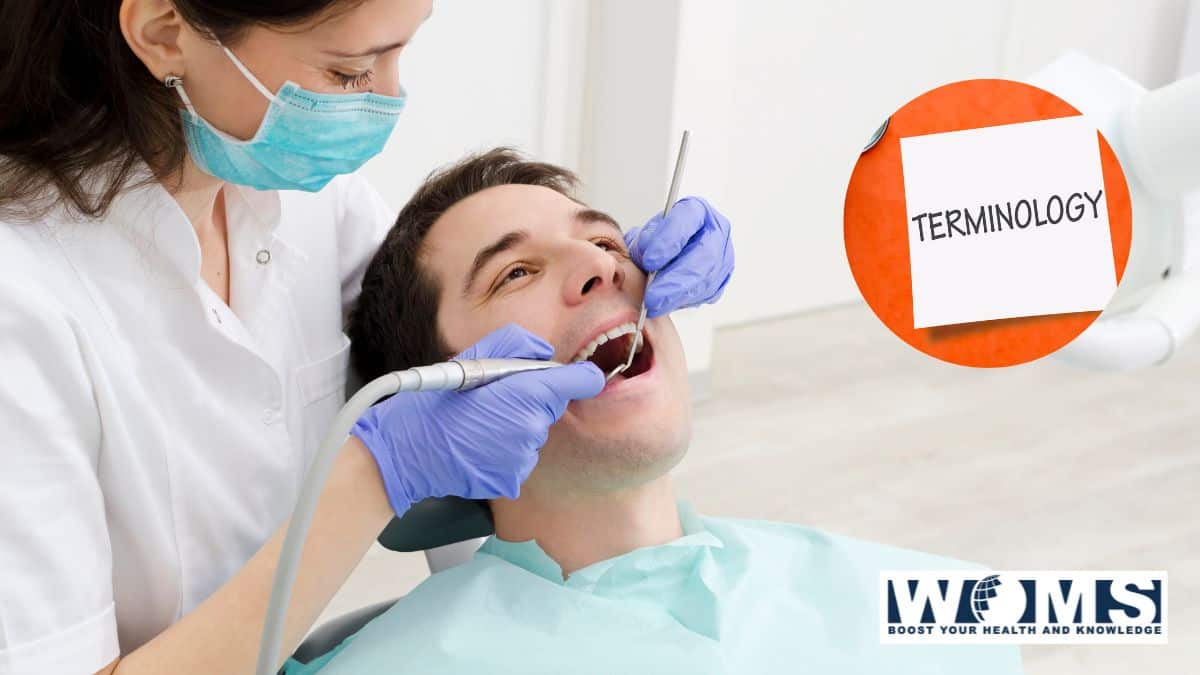A Beginner’s Guide to Dental Terminologies That Every Professional Use

When you visit a dental clinic, you may hear a lot of unfamiliar terms. As a patient it’s ok for you to not be aware of them. But for any dental professional it is very important to be well aware of all of them. If you are a dental professional, or a student on your way to becoming a dentist, here is a guide to all the basic dental terminologies that professionals use.
These common dental terms are searched by many dental students & professionals who are beginning their career as a dentist. People mostly look for these on dentist forum groups and communities that are built to help dental professionals.
List of basic dental terminologies:
Here begins the list of dental terms that you should be aware of:
- Abutment: In dental implants, an abutment is a small connector piece used to join the implant to the replacement tooth.
- Amalgam: A type of dental filling made from a mixture of metals including silver, tin, copper, and mercury. Amalgams are also sometimes referred to as “silver fillings”.
- Anesthesia: A state of anesthesia is induced by the administration of an anesthetic agent and is characterized by insensibility to pain and other sensations. Local anesthesia numbs a specific area while general anesthesia leads to unconsciousness.
- Bridge: A dental bridge is a fixed (non-removable) appliance used to replace one or more missing teeth. Bridges are usually made of porcelain or metal and are supported by the surrounding teeth.
- Canker Sore: A small, shallow ulcer that appears inside the mouth, on the gums, or on the tongue. Canker sores are often painful and can make it difficult to eat or drink.
- Cavity: A cavity is a hole in a tooth that is caused by decay. Cavities are also sometimes referred to as “tooth decay” or “dental caries”.
- Composite Resin: A type of dental filling made from a mixture of plastic and glass particles. Composite resins are also sometimes referred to as “tooth-colored fillings”.
- Crown: A dental crown is a fixed (non-removable) appliance used to cover and support a tooth that has been damaged by decay or injury. Crowns are usually made of porcelain or metal.
- Dental Floss: A type of string that is used to clean between the teeth. Dental floss is available in both waxed and un-waxed varieties.
- Dentures: Dentures are removable appliances used to replace one or more missing teeth. Dentures are usually made of acrylic or metal.
- Enamel: The hard outer layer of the tooth that protects the inner layers from damage. Enamel is the hardest substance in the human body.
- Fluoride: A substance that is added to water and toothpaste in order to help prevent tooth decay. Fluoride is a natural mineral that is found in many foods and in all water sources.
- Gingivitis: Gingivitis is a form of gum disease that is characterized by inflammation of the gums. Gingivitis is often caused by plaque buildup on the teeth.
- Halitosis: Halitosis is the medical term for bad breath. Halitosis can be caused by many different things including diet, tobacco use, certain medications, and dental problems.
- Impacted Tooth: An impacted tooth is a tooth that has not erupted through the gum line because it is blocked by another tooth or bone. Impacted teeth are often wisdom teeth.
- Jaw: The jaw is the bone that holds the teeth in place. The upper jaw is called the maxilla and the lower jaw is called the mandible.
- Malocclusion: Malocclusion is a misalignment of the teeth or jaws. Malocclusions can be caused by many different things including genetics, injury, and trauma.
- Mouthwash: Mouthwash is a liquid that is used to rinse the mouth. Mouthwashes can contain many different ingredients including fluoride, antiseptics, and alcohol.
- Occlusion: Occlusion is the contact between two surfaces. In dentistry, occlusion refers to the contact between the teeth of the upper and lower jaws.
- Orthodontics: Orthodontics is the branch of dentistry that deals with the correction of malocclusions. Orthodontic treatment can be performed using braces, retainers, or other appliances.
- Plaque: Plaque is a sticky film of bacteria that forms on the teeth. Plaque is the main cause of tooth decay and gum disease.
- Root Canal: A root canal is a procedure that is used to save a tooth that has been damaged by infection or decay. Root canals are performed by removing the infected or damaged tissue from inside the tooth.
- Sealant: A sealant is a thin coating of plastic that is applied to the chewing surfaces of the back teeth. Sealants help to prevent tooth decay by sealing out bacteria and food particles.
- Tray: A tray is a small, shallow dish that is used to hold dental materials such as toothpaste, mouthwash, or denture adhesive. Trays are often used during dental procedures such as teeth whitening.
- Whitening: Whitening is a process that is used to lighten the color of the teeth. Whitening can be performed using bleaching agents or other methods.
- X-ray: An x-ray is a type of radiation that is used to take pictures of the inside of the body. X-rays are often used to diagnose problems with the teeth or jaws.
- Zirconia: Zirconia is a type of ceramic that is often used in dental crowns and bridges. Zirconia is a strong material that is resistant to wear and tear.
- Chip: A small piece of the tooth that has broken off. Chips can be caused by accidents or biting down on hard foods.
- Decay: The process of deterioration of a tooth due to plaque and bacteria. Decay can lead to cavities.
- Dental implant: A metal device that is surgically placed into the jawbone to support a dental prosthesis (such as a bridge or denture). Dental implants are an alternative to traditional bridges or dentures.
- Filling: A type of dental restoration used to fill cavities. Fillings can be made from a variety of materials, including gold, silver, composite resin, and glass ionomer.
- Mouthguard: A type of mouth protector that is worn over the teeth to prevent injury to the teeth, gums, and jaws. Mouthguards are often worn by athletes to protect their teeth from being knocked out.
- Oral surgeon: A type of dentist who specializes in surgical procedures of the mouth, teeth, gums, and jaw. Oral surgeons are often involved in the placement of dental implants.
- Pediatric dentist: A type of dentist who specializes in the care of children’s teeth. Pediatric dentists are trained to deal with the unique dental needs of children.
- Periodontist: A type of dentist who specializes in the treatment of gum disease. Periodontists are often involved in the placement of dental implants.
- Prosthodontist: A type of dentist who specializes in the fabrication and placement of artificial teeth, such as dentures and bridges. Prosthodontists are often involved in the placement of dental implants and missing teeth.
So these were some top basic dental terms that is important for dental students and professionals starting their careers, to be aware of.
Do you have any questions about these dental terminologies? Or do you have any other questions related to dentistry? Visit Nifty Thrifty Dentists. They are a Dental Community and a Dentist Forum group that is built for dental professionals. It provides help with dental tips & tricks, and the latest dental news that you should be aware of.




